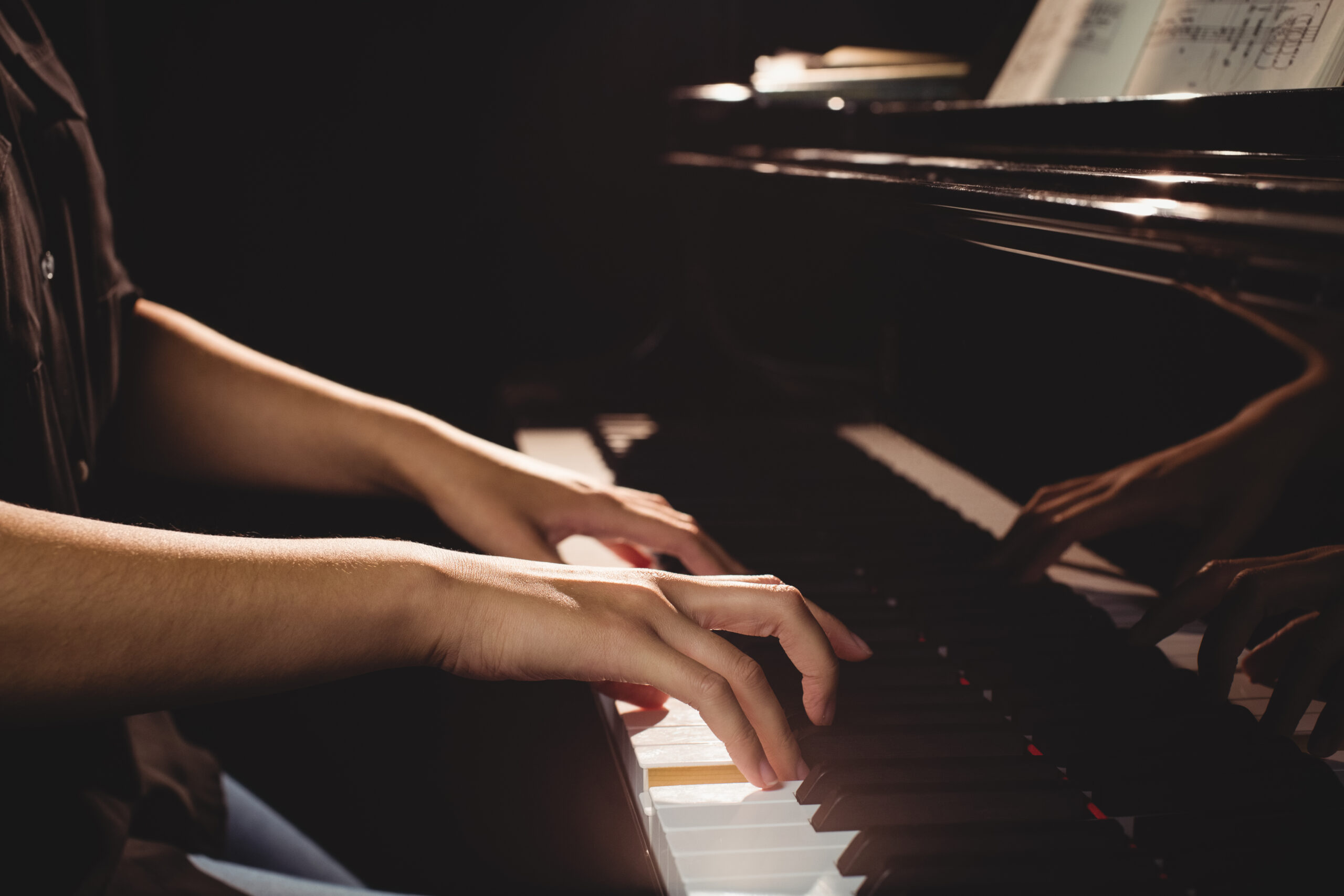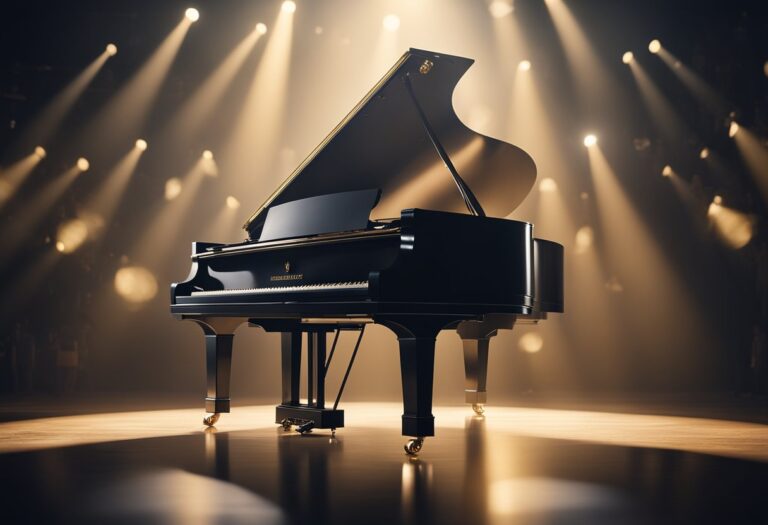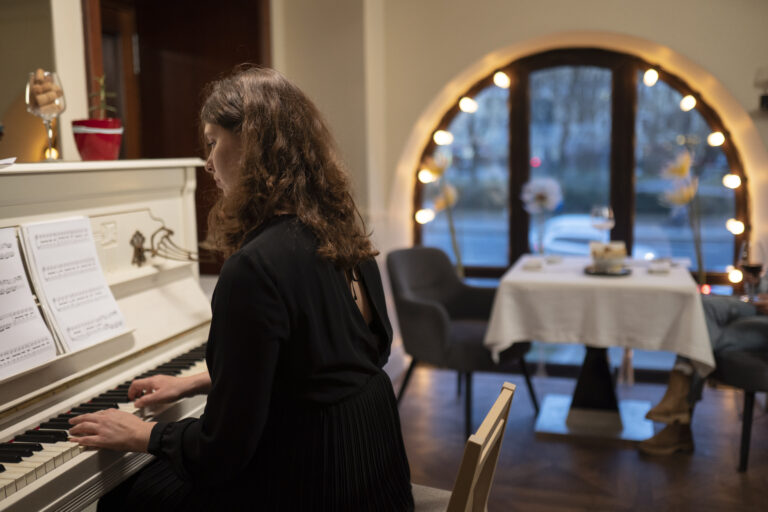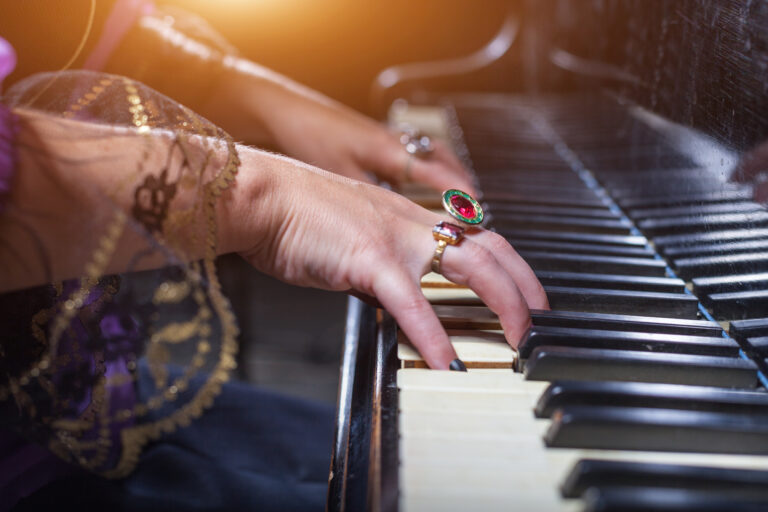The Musical Workout: Can Playing the Piano Help You Burn Calories?
Are you tired of the same old workout routines? If you’re looking for a way to burn calories that’s both fun and engaging, you may be surprised to learn that playing the piano could be the answer. While it may not seem like a traditional form of exercise, playing the piano requires physical effort and can lead to a moderate calorie burn.
As you play the piano, you engage a variety of muscles in your hands, arms, and upper body. Depending on the intensity of your playing, you may even engage your core and legs. While the exact number of calories burned can vary based on factors like weight and playing intensity, it’s estimated that you can burn between 100 and 200 calories per hour.
Of course, playing the piano shouldn’t replace your regular exercise routine, but it can be a fun and rewarding way to incorporate physical activity into your day. Plus, the mental and emotional benefits of playing music are well-documented, making it a great choice for overall health and wellbeing. In this article, we’ll explore the truth about playing the piano and burning calories, and how you can use this musical activity to improve your fitness and wellbeing.
Understanding Calorie Burn
When it comes to burning calories, playing the piano might not be the first thing that comes to mind. However, any physical activity can burn calories, and playing the piano is no exception. The number of calories burned depends on several factors, including your weight, the intensity of your playing, and the duration of your session.
To understand calorie burn, it’s important to know what a calorie is. A calorie is a unit of energy. When you consume food and drinks, you take in calories. When you engage in physical activity, you burn calories. The number of calories you burn depends on the activity and the intensity of the activity.
Playing the piano is not a high-intensity physical activity, but it does require movement and energy. According to a study by the American Council on Exercise, playing the piano burns approximately 85 calories per hour for a person weighing 125 pounds, and 102 calories per hour for a person weighing 150 pounds. This is roughly equivalent to the number of calories burned while walking at a moderate pace.
It’s important to note that playing the piano is not a substitute for regular exercise. While it can contribute to calorie burn, it should not be the only physical activity in your routine. Additionally, the number of calories burned can vary depending on the individual and the specific piano piece being played.
While playing the piano can certainly contribute to calorie burn, it’s important to remember that it’s not a substitute for regular physical activity. While the piano can be a fun and enjoyable way to stay active, it’s important to incorporate other forms of exercise into your routine to maintain overall health and well-being. So, whether you enjoy running, swimming, or practising yoga, make sure to prioritize physical activity in your daily life and reap the many benefits that come with it.
Piano Playing and Physical Activity
Playing the piano can be a great form of physical activity. Although it may not be the most intense workout, it can still provide some benefits for your body.
Hand Movement and Coordination
When you play the piano, your hands are constantly moving and coordinating with each other. This can help improve your hand-eye coordination and dexterity. Additionally, playing the piano can help strengthen the muscles in your fingers and hands.
Posture Maintenance
Maintaining good posture is important when playing the piano. Sitting up straight and keeping your shoulders relaxed can help prevent back pain and improve your breathing. Additionally, maintaining good posture can help improve your overall balance and stability.
Overall, while playing the piano may not be the most intense form of physical activity, it can still provide some benefits for your body. By improving your hand-eye coordination, strengthening your hand muscles, and maintaining good posture, playing the piano can be a great way to stay active and healthy.
| Pros | Cons |
| Improves hand-eye coordination | Not a high-intensity workout |
| Strengthens hand muscles | Limited range of motion |
| Maintains good posture | May cause hand fatigue |
| Improves balance and stability |
- Playing the piano can be a great form of physical activity.
- Good posture is important when playing the piano.
- Playing the piano can improve your hand-eye coordination and strengthen your hand muscles.
- It may not be the most intense workout, but it can still provide some benefits for your body.
Mental Exertion in Piano Playing
Cognitive Demands
Playing the piano requires a great deal of mental exertion. You need to focus on several things at once, such as reading sheet music, keeping the rhythm, and coordinating your fingers. This cognitive demand can be quite challenging, especially for beginners.
To play the piano, you need to develop a range of cognitive skills, such as:
- Attention: You need to concentrate on the music and avoid distractions.
- Memory: You need to remember the notes, the rhythm, and the dynamics.
- Perception: You need to perceive the nuances of the music, such as the tempo, the phrasing, and the articulation.
- Problem-solving: You need to solve problems on the fly, such as when you make a mistake or when you encounter a difficult passage.
Emotional Engagement
Playing the piano is not just a matter of technical proficiency. It also involves emotional engagement. You need to express the mood and the feeling of the music and convey it to the listener. This emotional engagement can be both rewarding and challenging.
To play the piano with emotional engagement, you need to develop a range of emotional skills, such as:
- Empathy: You need to feel the emotions of the music and connect with the listener.
- Creativity: You need to interpret the music in your own way and add your own expression.
- Self-awareness: You need to be aware of your own emotions and how they affect your playing.
- Resilience: You need to cope with the emotional demands of playing the piano, such as frustration, disappointment, or stage fright.
Playing the piano is more than just hitting the right keys – it’s a mental and emotional workout that challenges the mind and soul. From developing cognitive skills like memory and concentration to expressing emotions through music, the piano requires a range of abilities that can be both challenging and rewarding. By honing these skills, you can improve your piano playing and enjoy the music on a deeper level. So, whether you’re a seasoned pianist or just starting out, embrace the mental and emotional aspects of playing the piano and discover the true beauty of this incredible instrument.
Factors Influencing Calorie Burn in Piano Playing
Duration of Play
The duration of your piano playing session is a significant factor in determining the number of calories you burn. The longer you play, the more energy you expend, and the more calories you burn. A 30-minute session of playing the piano can burn up to 85 calories, while a 60-minute session can burn up to 170 calories. However, it is important to note that the number of calories burned can vary depending on your weight, age, and gender.
Intensity of Play
The intensity of your piano playing also influences the number of calories you burn. Playing with higher intensity requires more energy and burns more calories. Intense playing involves using more force while striking the keys, which increases the amount of energy required and, in turn, the number of calories burned. However, it is important to note that playing too intensely for an extended period can lead to injury and should be avoided.
In conclusion, the duration and intensity of your piano playing session are two significant factors that influence the number of calories you burn. While playing the piano may not be the most effective form of exercise for burning calories, it can still contribute to your overall physical activity and health.
Conclusion
While playing the piano can certainly burn calories, it’s important to keep in mind that the amount burned is not significant. The number of calories burned will depend on factors such as weight, intensity of playing, and duration of the session.
According to a study, playing the piano for an hour can burn around 100-200 calories, which is equivalent to walking for 30 minutes or doing light housework. While this calorie burn is not enough to replace a regular workout routine, playing the piano does offer some physical benefits, such as improved hand-eye coordination and finger dexterity. It can also improve your posture and reduce stress levels.
In the end, playing the piano is a fun and enjoyable activity that can offer both physical and mental benefits. While it may not be relied upon as a primary form of exercise, it can certainly be incorporated into a well-rounded fitness routine. So, sit down at the keys and let the music guide you to a healthier, happier you!






